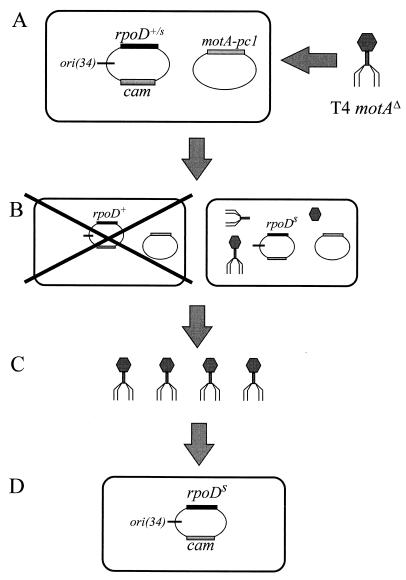FIG. 1.
Schematic for ς70 suppressor selection. (A) TabG cells contain a MotA-pc1 expression plasmid and mutagenized plasmid pMPC34, which contains the ς70 gene (rpoD) and the T4 origin, ori(34). The cells are infected with T4 denAB motAΔ. (B) Most infected cells contain a wild-type rpoD gene (or rpoD mutations that do not suppress) and therefore lead to an abortive infection (left cell). A viable infection should occur only if a mutant ς70 is expressed from the plasmid and suppresses the MotA-pc1 defect (right cell). The suppressing mutation in rpoD is designated rpoDS in this diagram. The viable infection allows T4 growth and replication of the pMPC34, which then forms long concatemers of plasmid DNA. (C) The concatemeric plasmid DNA is packaged into some of the phage heads to produce transducing phage in the lysate. The lysate is then used to transduce E. coli cells, and transductants are selected by the cam marker on pMPC34 (D).

